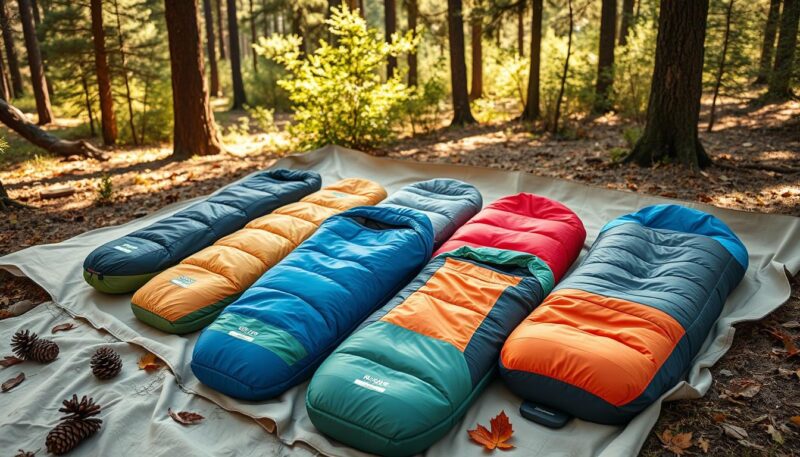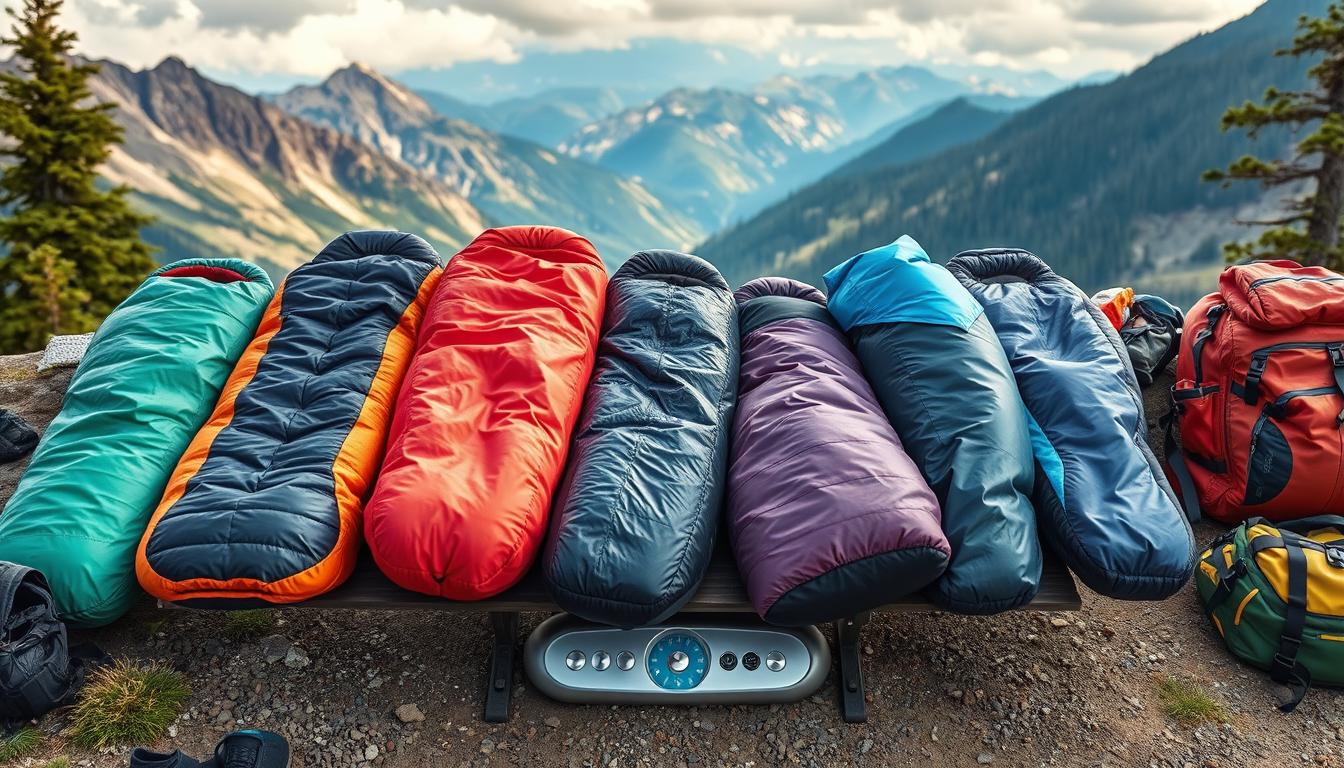When it comes to planning your next backpacking adventure, understanding how much a sleeping bag weighs is essential for streamlining your gear and maximizing comfort on the trail. Many backpackers discover that a lighter load enhances their ability to hike further without feeling the toll of fatigue on their legs and feet. In your quest for the best lightweight sleeping bags, it’s crucial to strike a balance between sufficient warmth and manageable sleeping bag weight. Studies have shown that maintaining a proper ratio of your total pack weight can significantly impact your speed and balance while walking. Moreover, the total weight of your pack, shelter, sleeping bag, and sleeping pad should ideally not exceed 4 kg (about 8.8 lbs) for optimal performance.
As you prepare for your journey, you might recall this statistic: for solo backpackers, the weight of your shelter should remain under 1.5 kg (3.3 lbs). Furthermore, when camping in temperatures above freezing, your sleeping bag should ideally weigh no more than 800 grams (1.8 lbs). By keeping these guidelines in mind, you’ll not only enhance your comfort but also enjoy a backpacking experience that’s more enjoyable and efficient. In the following sections, we’ll delve deeper into the factors that influence sleeping bag weight, typical weights among various types, and practical tips for lightening your load, all while ensuring you are well equipped for your wilderness adventures.
Understanding Sleeping Bag Weight
Choosing the right sleeping bag involves understanding the various factors influencing sleeping bag weight. Lightweight options often cater to specific needs, especially for backpackers seeking efficiency. Several elements come into play when evaluating a sleeping bag’s suitability for your adventures.
Factors Influencing Sleeping Bag Weight
The lightweight characteristics of a sleeping bag depend primarily on materials used and the type of insulation. Down insulation tends to be lighter and warmer than synthetic alternatives, making it a popular choice for ultralight sleeping bags. Mummy-style sleeping bags are particularly favored for their compact design, which minimizes fabric without compromising comfort. On the other hand, rectangular sleeping bags provide more space but tend to weigh more due to extra fabric.
In general, a warmer sleeping bag requires additional insulation, increasing its weight. For example, down sleeping bags can last over a decade but lose insulating properties when wet, whereas synthetic options maintain some warmth even when damp. Understanding these factors enables you to choose a sleeping bag that aligns with your hiking goals while keeping weight manageable.
Average Weight of Sleeping Bags
The average weight of sleeping bags typically falls between 2 to 4 pounds, depending on their design and insulation. For ultralight enthusiasts, the best sleeping bags range from 1 lb. 0 oz. to 2 lb. 6 oz., with many aiming for a total sleep system that weighs under 4 pounds. When considering your options, keep in mind that sleeping pads and pillows add to the total weight, usually bringing the complete sleeping setup to between 4 to 7 pounds. Understanding the average weight of sleeping bags helps guide your choice for particular weather conditions and comfort levels.
| Sleeping Bag Type | Average Weight | Temperature Rating | Price Range |
|---|---|---|---|
| Ultralight Down | 1 lb. – 2.5 lbs. | 15°F – 35°F | $158 – $740 |
| Compact Synthetic | 2 lb. – 4 lbs. | Relevant to insulation type | $159 – $425 |
| Mummy | 1 lb. – 3 lbs. | Based on insulation | Varies |
| Rectangular | 2 lb. – 4 lbs. | Varies by insulation | Varies by brand |
How Much Does a Sleeping Bag Weigh?
When considering how much a sleeping bag weighs, different types and materials will significantly impact the overall weight. Lightweight options are essential for backpackers who prioritize efficiency without compromising comfort. Understanding the typical weights for different types of sleeping bags helps you select the right bag for your adventures.
Typical Weights for Different Types of Sleeping Bags
Typically, summer sleeping bags weigh less than a pound, while three-season and winter bags average around 2 to 3 pounds. Here are some examples:
| Sleeping Bag Model | Weight | Use | Temperature Rating | Price |
|---|---|---|---|---|
| Therm-a-Rest Hyperion | 1 lb 4 oz | Ultralight | 20°F | $500 |
| Big Agnes Torchlight UL | 2 lbs 2 oz | Ultralight | 20°F | $420 |
| Mountain Hardwear Bishop Pass | 2 lbs 12 oz | Three-season | 20°F | $235 |
| Teton Sports LEEF | 3 lbs 8 oz | Budget-friendly | 20°F | $75 |
Weight Comparison: Down vs. Synthetic Bags
When examining the weight comparison between down and synthetic bags, down options tend to be lighter due to their compressibility and higher fill power. Even bags with high-quality down, such as those featuring 900-fill or 850-fill insulation, maintain lower weights. Despite the advantages, down insulation loses its thermal efficiency when wet, while synthetic alternatives retain loftiness under such conditions. Although synthetic bags may cost less, down bags often provide superior warmth-to-weight ratios. This comparison helps you determine how much should a sleeping bag weigh based on your specific outdoor requirements.

Tips for Lightening Your Load
Reducing weight for hiking is an essential consideration for any outdoor enthusiast. By applying some practical strategies, you can significantly lighten your load without sacrificing comfort or safety. Here are a few effective tips for implementing changes in your packing regimen.
Choosing Lightweight Sleeping Bags
When selecting your sleeping bag, focus on options specifically designed for lightweight camping gear. The average lightweight sleeping bag weighs between 1.5 to 2.5 pounds. Shifting to these types not only minimizes weight but also enhances packability, freeing up space for other essentials.
The Role of Multi-Functional Gear
Utilizing multi-functional gear effectively contributes to tips for lightening your load. For instance, a sleeping pad can double as a comfortable seat cushion during rest breaks. This approach reduces the number of items in your pack, streamlining your gear while still meeting all needs.
Pack Smart: What to Leave Behind
Being selective about what to pack is crucial for reducing weight for hiking. Assess the necessity of every item. For example, consider sharing a quilt with a partner to save around 0.5 pounds each. Avoid carrying heavy cooking gear initially—opting instead for a lightweight stove or cold meals can help lower your pack weight effectively.

Conclusion
When it comes to selecting the right sleeping bag, understanding weight is crucial for enhancing your outdoor experience. As discussed, ultralight sleeping bags typically weigh less than 2 pounds, making them a fantastic option for those planning long hikes. Conversely, heavier bags may offer additional comfort but can impede your ability to maintain endurance during multi-day treks. By making informed choices based on your specific needs, you can ensure you’re opting for some of the best sleeping bags for long hikes, perfectly suited to your camping style.
Using insights from this sleeping bag packing guide, you can streamline your gear to include only what’s necessary. Remember, a well-constructed ultralight sleeping bag not only helps in managing your pack weight but also provides warmth and comfort, all while allowing you to travel further. Your choice of lightweight outdoor gear is just as significant as the bag itself, so prioritize versatility and efficiency to make the most of your adventure.
Ultimately, the key to a successful camping experience lies in balancing comfort with practicality. By understanding the weight differences and actively choosing the right sleeping bag for your trips, you’ll be well-equipped to enjoy nature without the burden of hefty gear. As you prepare for your next journey, keep these factors in mind to ensure optimal performance and enjoyment.

